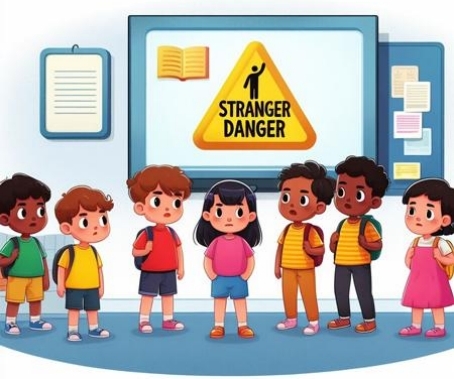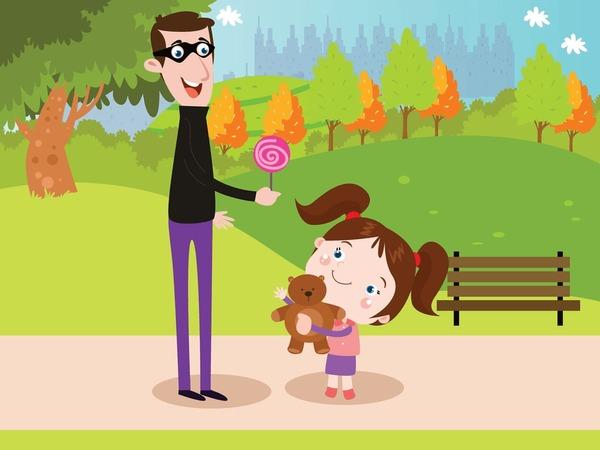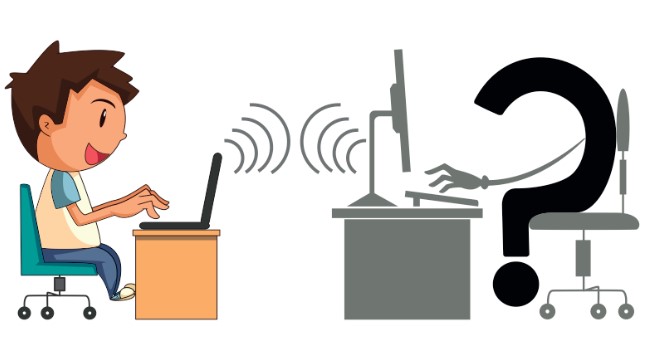Unfortunately, about 800,000 American children go missing every year. A greater proportion of these cases involve strangers. This alarming number necessitates teaching children about stranger danger in the simplest way possible. As a parent, it is your duty to ensure that your child knows what to do if unsure.
This inclusive guide will discuss what stranger danger means and effective ways of teaching it. By understanding the importance of stranger danger for kids, you can take proactive measures to ensure your child’s security.
What is stranger danger: Every parent needs to know?
Stranger danger is a simple but very important concept for children to learn about the dangers associated with unknown individuals. It helps them recognize dangerous environments related to strangers who want to hurt them. The use of “stranger danger” here underscores that not every person they meet should be trusted. Moreover, one must be cautious around those they do not know.



In the ’60s and ’70s, stranger danger term became popularly known. It’s that time when more and more media coverage was done on child abductions and other crimes against young ones. Parents and teachers started emphasizing the need for their children’s skepticism towards unfamiliar faces. Thus preventing those awful incidents from ever happening again. With time, this thought also came about shunning away from strangers. But also relates to recognizing oneself and threatening adults such as relatives and friends.
Teaching stranger danger becomes crucial. This knowledge equips children with what they need to ensure their safety. Apart from this, there must be a balance between allowing kids too much fearfulness in their minds against everyone. You should also help them know how possible threats might appear before them. So they can react accordingly when identifying or reporting any suspicious persons. These may include dealing with strangers either online or offline.
3 Real-life examples of stranger danger
Now, we will look at real-life abnormal behaviors related to stranger danger. Children may encounter these in different places. For example:
- In public places
In this case, a stranger targets and approaches kids. He may offer them sweet things like candy or toys. The person could try to start a conversation with the child. For example, he might ask for help finding his lost pet. Moreover, he says he knows the child’s parents. It is common to see these kinds of strange behaviors in public places. Usually, it is meant to take children away from safety zones.



- At school
A stranger may approach a child outside the school gate. Such persons pretend that the child’s parents send them to collect them. It’s a worrying situation as the stranger tries to gain the child’s confidence by pretending to be associated with his/her family. Educating kids on such issues in schools can enable them to avoid such dangerous situations.
- Around the house
An unknown person, claiming to be a courier boy, knocks at your door, and a child opens it. These odd behaviors are scary because the stranger uses lies to get inside. To avoid these dangers, children should know not to open doors to strangers. They must call their guardians if anything suspicious happens.
Parents, therefore, need to introduce kids to examples of strange behaviors through “stranger danger” activities, which aim at increasing awareness. It also teaches them to get help from trustworthy people rather than taking candies from strangers so that they can be better prepared for realistic situations.
What is stranger danger on the Internet?
Stranger danger has moved beyond physical space into cyberspace as children become more engaged in the digital world. Online stranger danger describes the potential risks.



The booming social networks have greatly increased the opportunities for children to meet strangers. Examples are social media platforms like Facebook, online games, Snapchat, and chat rooms. These communications often lead to risky situations. Because anonymity on the internet lets dangerous individuals hide behind false identities. Thus making it difficult for kids to tell when they are safe.
For example, pedophiles often use manipulative techniques such as acting like peers. They also give gifts during playtime and show interest in their hobbies so that he/she can develop trusting relationships with them.
The growing dangers of online strangers have made it more urgent than ever for parents to take action to ensure their kid’s safety online. Parents must educate their children on the risks posed by stranger messaging and building safe browsing habits.
It’s time for kids to fully understand potential online dangers and ways to deal with suspicious situations in the virtual world.
What age should you tell kids about stranger danger?
When and how parents and guardians can introduce the concept of “stranger danger” remains their decision. Raising children’s stranger awareness requires tricks for children of all ages with different levels of cognition. Professionals have broken this down chronologically below, but before we get into that, let’s scroll down!
i) With preschoolers (3-5 years)
Teach young children about strangers using simple terms and illustrations at this stage in life. Ask them not to take candy from people they don’t know well or to wander away from their caregivers. Scholars suggest using simple words and playing games that portray these issues. This will help little ones internalize the lesson without fear.
ii) With elementary school (6-12 years)
Kids in this group can handle more complex information. They should be instructed on avoiding precarious situations, such as talking with unknown people or requesting friendship through social media. Research shows that discussing school or public places prepares them for real-life scenarios. This allows for open communication where they can easily share suspicious events with each other.
iii) With teens (13+ years)
Adolescents should also be warned against online exposure and offline dangers of contact with strangers. Parents might want to discuss the risks of sharing personal information online. Additionally, parents need to make their children understand the importance of trusting their guts. They must always set limits against unknown persons, even off the web platform.
Role of schools and community



Schools must integrate safety lessons into their curriculum to educate children about stranger danger. Moreover, they must organize events based on stranger danger awareness for children. Collaborating with parents and nearby organizations is vital. This way, parents and organizations in the community can ensure that children are given a consistent stranger danger education.
How to teach kids about stranger danger without scaring them?
It’s important to teach children about stranger danger while avoiding creating fear or anxiety. Now, we will explore some ways that work very well.
i) Use educational tools: Books, videos, and apps are great mediums for explaining safer strategies in kid-friendly ways. These may often feature stories that incorporate safety tips that kids can find relatable.
ii) Role-playing activities: These games help youngsters learn how best they can react to different circumstances playfully. For example, parents can teach kids by acting out different possible situations. It’s a very interactive and interesting way to give kids stranger danger safety tips.
iii) Start education at a young age: Expose young children to the concept of stranger danger early. You must use simple language they can understand. Start with basic rules, like what is safe and unsafe regarding strangers.
iv) Create your own “secret” family word: Have a secret code word known only by family members. Teach your child how to use this word when someone pretends to be sent by you somewhere. The moment your kid realizes the potential abductor does not know the password. Then, he or she must move away and get assistance immediately.
v) Specific safety rules for different age groups: Your instructions should correspond with your child’s age and level of development. For instance, if you have little ones, talk about sticking close to a trusted adult in public places. If your child is older, tell them how to tackle complex issues such as online interactions. Keeping explanations at their level helps prevent overwhelming them.
vi) Clearly define “good and bad strangers” for kids: In other words, not all people they don’t know well are evil. For instance, police officers or their teachers are also considered strangers. Therefore, speaking frankly about this difference lowers unnecessary fears but still teaches them to be cautious.
vii) Teach children to trust their instincts and say ‘No’: Ensure your child feels confident enough to trust his or her gut feelings. Let them know it’s okay to say no. If something does not feel right, they could seek help. These help create self-assurance free from fear.
Hence, parents can adequately educate their children about stranger danger through such means. Additionally, this will reduce anxiety levels and enhance healthy social development.
Key terms for discussing stranger danger with kids
Using the correct and balanced terms is essential when discussing stranger danger with kids. This way, they will understand what is being explained but will not become unduly scared. Let’s have a look at these terms!
Should say:
- “Always stay where there are people who can see you and who you can see in public places.”
- “Never accept food, treats, or sweets from anyone you don’t know.”
- “Do not go where those unfamiliar persons invite you.”
- “Never give your details to someone you don’t know.”
- “If something makes you uncomfortable, tell a grown-up you trust.”
Shouldn’t say:
- “All strangers are dangerous.” This may scare children so much that they become afraid of all new people, including the good ones.
- “Never talk to anyone that you don’t know.” This term sometimes confuses kids when they want assistance from a reliable stranger, such as a police officer.
- “You should trust adults because they’re wiser than you are.” Some grown-ups have ill intentions. Therefore, this may give children false confidence in them.
- “But nice people aren’t dangerous.” This means that only unattractive people or those looking like meanies could be harmful. This kind of thought is misleading for children.
- “You are too young to understand.” These conversational tones deny children their learning and understanding ability, making them susceptible to life experiences.
The above-mentioned key phrases provide clear-cut and practical guidance to kids. Thus, they can handle stranger danger for kids without causing unnecessary fear or misunderstandings.
What else can parents do to protect their child from stranger danger?
Here are additional action tips that parents should apply to protect their children against stranger danger both online and offline.
Establish clear safety rules
You could develop clear safety rules for your children regarding “stranger danger.” For example, you may want them not to talk with unfamiliar adults, never accept gifts or rides, or always be in groups. Have these rules regularly revised so that new situations are discussed, too. This way, guidelines will be reinforced to ensure kids stay awake and ready.
Encourage open communication
Create a good environment where your child will ever see fit, sharing his/her experiences and worries. Make them talk about bad experiences with people they do not know well. You may help your child feel safe enough to report anything suspicious he/she comes across. This is only possible by encouraging dialogue every time.
Use a reliable parental control app



A reliable parental control app such as FlashGet Kids helps ensure children’s online safety. Powerful features like live location tracking and live monitoring on kids’ mobile phones add another layer of protection. This enables parents to track their children’s movements and surroundings in real-time so they can respond swiftly if something seems wrong. Also, parents can set up screen mirroring and notification tracking to detect when their kids get any unknown text messages or dangerous apps.
Thus, parents who use these strategies and tools like FlashGet Kids will be fully protected against stranger danger.
Final takeaways
In other words, every parent should know what “stranger danger” brings and ways to protect their children from potential risks. Meanwhile, it remains important to teach this idea to all children of all ages. Furthermore, teaching without scaring them, like using clear and positive communication terms, improves their safety awareness, too.
Using the powerful parental monitoring app, FlashGet Kids undoubtedly provides them with another layer of protection. Parents must learn about new modern parenting needs and styles and employ the available tools to safeguard the youngster’s online or offline affairs.

